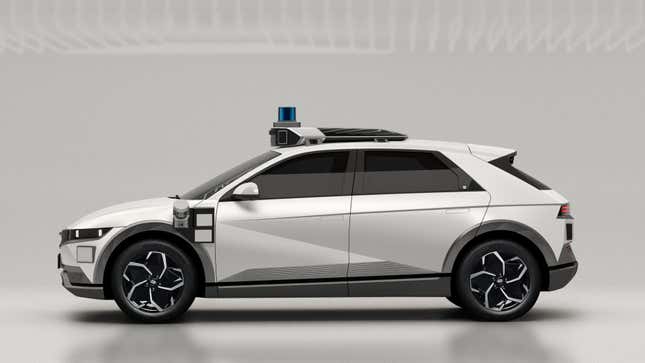Uber robotaxis are live in Las Vegas, marking the first time that Uber is offering app users rides in autonomous vehicles in a major U.S. city. But the ride-hailing service is not debuting a fleet of its own robotaxis, and, instead, is partnering up with Motional for a 10-year agreement that will kick off in Las Vegas, Nevada, before expanding to other major cities throughout America.
The Uber robotaxis will be available to the public in Vegas by selecting the UberX or Uber Comfort Electric options on the ride-hailing app starting today. There’s no need to be part of a beta group or have signed up beforehand; the robotaxi service is just there, waiting to be waved down (well, tapped on) via the Uber app. Users will have the option to turn down rides in the robotaxis if they’d rather not rely on autonomous vehicles. And since this is still in the early stages for Uber, there will be human operators in the AVs for safety reasons.

Motional says its taxis are level 4 autonomous vehicles, which means they should be capable of operating without any help or intervention from human drivers, but putting AI behind the wheel of a 4,400-pound EV with gobs of torque can be risky. The cars are based on the Hyundai Ioniq 5, but are modified with a suite of onboard sensors that include cameras, radar, and lidar.
Uber knows all about the risk AVs can pose after having invested billions of dollars to develop its own robotaxis, which would supposedly have put Uber on the path to profitability. But developmental delays and the death of a pedestrian in 2017 forced Uber to shutter the program; the pedestrian was killed by an Uber AV in Tempe, Arizona, while crossing the street, according to the New York Times.
Now, it looks like Uber is unwilling to fall behind as autonomous vehicles keep moving forward in the U.S., with competitors such as Cruise offering public rides in robotaxis. But Uber would rather put the onus of AVs on Motional, which is a joint-venture between Hyundai and Aptiv that’s been operating robotaxis in Las Vegas for five years, offering limited rides for Lyft users since 2018. That means these new Uber robotaxis won’t be a novel sight on the strip; these latest Hyundai Ioniq 5 EVs joining Uber will just wear a logo that they hadn’t worn before.
